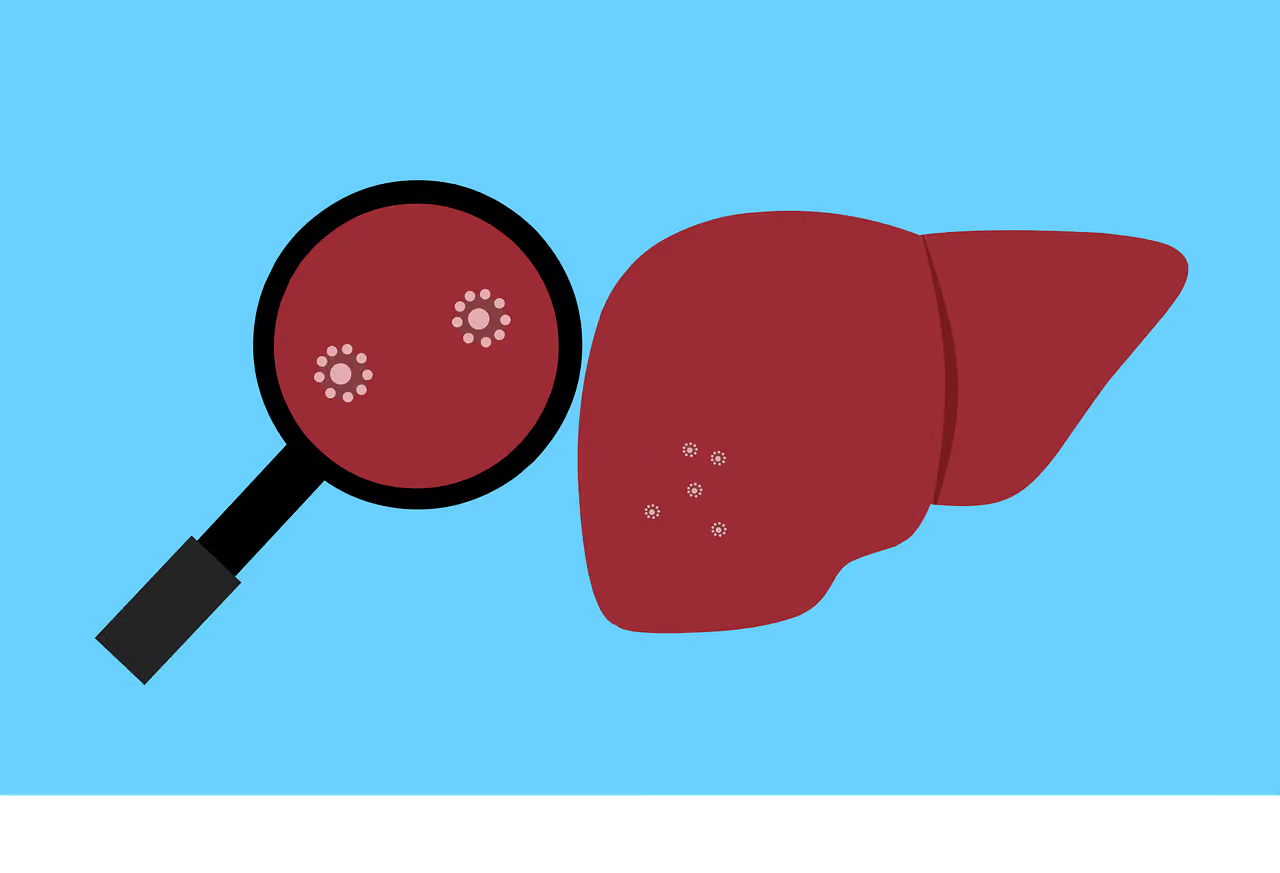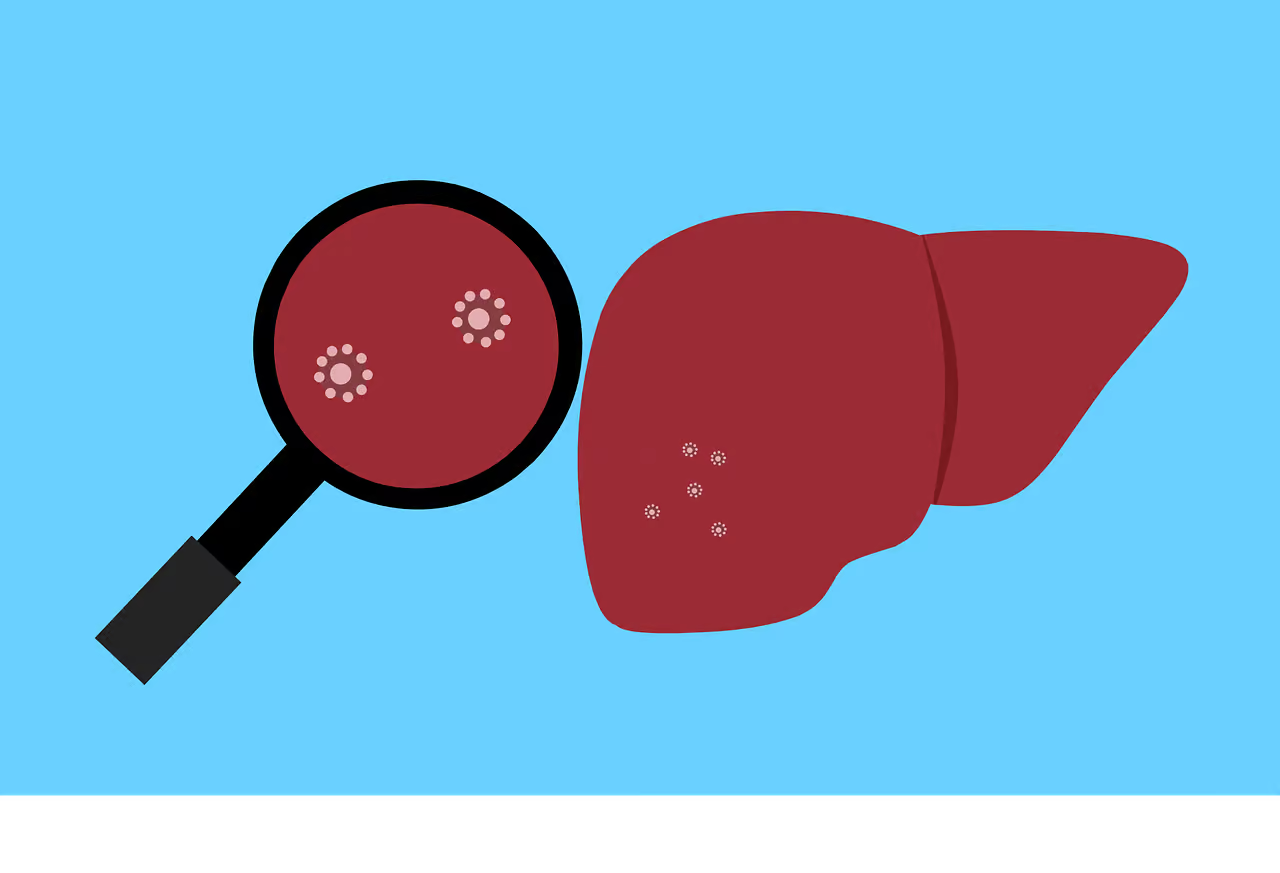exceeds a certain threshold, doctors diagnose steatosis of the liver.
Steatosis is the earliest stage of fatty liver disease, where excessive fat cells build up. Multiple noxious elements can lead to such a morbid state. Doctors see the changes in alcoholism or metabolic illnesses. In not normal amounts of scar tissue in the liver due to persistent inflammation, liver fibrosis occurs as steatosis progresses. Without treatment, the disease results in life-threatening problems. Hence, appropriate diagnosis and management are very important.
However, fatty liver typically does not present any symptoms. Some patients may show general signs. In more serious cases, symptoms of liver failure can start to develop. Fatty liver is frequently identified incidentally during diagnostic testing. Elevated liver enzyme levels or an ultrasound abnormality may provide an early indication. The treatment is based on what the cause of the fatty liver is. Lifestyle change is the main treatment for fatty liver. Read on for more information on what a diseased liver looks like.

The pathological condition of fatty liver disease can have different names based on the cause. Many deleterious agents can cause the worsening of liver functions, resulting in steatosis. Test the cause is key in diagnosis, as the subsequent course of treatment depends upon it. Now, let's look at the classification of liver diseases.
The term organ steatosis has been utilized to describe the condition for both nonalcoholic fatty liver disease (NAFLD) and also alcoholic liver disease (ALD). The mechanisms for the pathogenesis of the accumulation of excess fat differ in each condition. ALD is one of the oldest liver diseases, affecting both poor and rich people for centuries.
By contrast, NAFLD is a more recent occurrence. It points to a sedentary lifestyle and is more prevalent among the wealthy stratum of society, as the disease is more prevalent in developed countries. The genetic risk factors differ between ALD and NAFLD; the only bridge between them is the population's behaviors, lifestyle, and cultural factors.
This phenomenon conceals the forces of a toxic agent that can cause fatty liver. Steatosis of the liver may be due to the use of some drugs. But mostly, this is alcohol, and then we call it — liver alcoholic steatosis. Such a disease doctors cannot diagnose unless a history of high alcohol consumption is affirmed in the patient history. Along with an earlier drinking age, higher consumption of alcohol concomitantly increases the incidence of ALD throughout the globe. ALD is also very strongly associated with alcohol abuse disorders and other mental disorders.
Although most heavy drinkers will have fatty liver, it is generally viewed as benign because it is asymptomatic (so often goes unnoticed) and regresses with abstinence. The major factors associated with the risk of ALD involve the pattern and amount of alcohol consumed.

NAFLD differs from alcoholic liver disease because it has metabolic comorbidities associated with insulin resistance (IR). Metabolic syndrome, obesity, diabetes, and high cholesterol levels are often associated with NAFLD. In nonalcoholic fatty liver disease, cardiovascular disease is the leading cause of death, followed by frequent extrahepatic malignancies.
When doctors find no identifiable cause, such as alcohol abuse, they diagnose this type of fatty liver. In diagnosing this liver disease, it is necessary to show fatty liver lesions. NAFLD encompasses a histological spectrum that includes mainly mild fatty liver, fatty liver with inflammation and hepatocyte injury, and may be associated with progressive fibrosis and cirrhosis. NAFLD is primary or secondary, depending on the cause.
Fatty liver is more commonly found in males, and its incidence increases with age. Peak incidence occurs in people aged 40–59. For most populations, the prevalence of NAFLD has increased relatively steadily over the last twenty years. Diabetes and obesity are common causes of nonalcoholic fatty liver disease. Risk factors also apply to obesity, diabetes, and metabolic syndrome, which are risk factors for complications of the disease in the form of cirrhosis.
Moreover, alcohol is responsible for a significant fraction of the global burden of liver disease. Alcohol-related morbidity and mortality is the burden of the system, which is higher in economically poorer countries. In addition, more than half of the liver-related mortality of unknown cause could be explained by alcohol because patients hide their alcohol-use history, and doctors avoid mentioning alcohol use in death certificates due to socio-cultural issues and insurance problems.
The fatty liver shows fat deposition in the middle zone. Chronic inflammation also occurs in conjunction with steatosis. We know this condition as a pathological condition with severe health problems but is most frequently asymptomatic. A few patients will display nonspecific indications, which don't imply anything vague. So, the diagnosis is not easy, and mainly, patients with fatty liver come to the physician for other reasons.

Fatty liver can also have strange symptoms such as nausea, vomiting, and headaches. Aches are also accompanied by fatigue and malaise. Patients are commonly asymptomatic but may complain of vague abdominal discomfort or right upper quadrant pain. Or maybe the liver is large and causing pain. The most easily observed manifestation of physical examination is hepatomegaly. If a fatty liver causes inflammation, other signs could develop. Mild jaundice can be seen as a sign of liver trouble. Symptoms of portal hypertension are also seen in more advanced liver disease.
Doctors need specific information about a patient's alcohol intake. They must also evaluate the medical history, family history, current and previous prescription medications, and drugs or supplements. In addition, doctors need to ask patients questions about diet, exercise, obesity, and assessment of comorbid conditions such as hyperlipidemia and diabetes. These are all very important factors that help establish the cause of fatty liver. Further, tests demonstrating meaningful variation indicative of organ steatosis should be conducted.
While not specific and often even somewhat misleading, depending on your background, your lab tests give us several key pieces of information about fatty liver. The initial evaluation should include a comprehensive liver panel as a first step. Liver parameters can check the function of a liver. Lipid and iron panels should also be done. Elevated cholesterol suggests liver impairment, and excess iron indicates liver toxicity. Laboratory studies can also evaluate insulin resistance. Viral hepatitis also needs to be excluded. Liver enzymes may be high in patients with alcoholic liver disease. It is also possible that some other parameters need to be tested as well.
Fatty liver diagnosis relies on imaging studies. Diagnosis based on ultrasound is the least invasive and relatively cheapest method. The results can be clear and good with such a high sensitivity of the test. This technique is employed to evaluate the degree of hepatic steatosis. Quantification of fatty liver is a key issue as it reflects disease severity. Sometimes, a non-contrast CT abdomen, an MRI, or something else is preferred. However, these methods are costly and less efficient.

The gold standard for measuring fatty liver is liver biopsy. A liver biopsy is generally the most precise examination for evaluating the type and intensity of liver disease. It will also help in assessing the efficacy of different treatment options. Liver biopsy has disadvantages, however, and is not always feasible. Liver biopsy carries a moderate risk of complications, is invasive, influenced by sampling error, and is costly. As a result, imaging techniques are often used to this end. But sometimes a biopsy is needed. Histological examination is generally performed depending on risk factors, laboratory findings, and the severity of the disease.
The type of therapy is based on the reason for the fatty liver and the person's severity. Nevertheless, all patients must be advised to switch to a healthier and more suitable lifestyle. This is especially applicable to those who are obese. There are also potential pharmacological options, but they are limited. In extreme scenarios, you will be required to get the surgery done. Treatment of fatty liver is aimed at delaying the evolution of the steatosis to liver disease and death.
Finally, it is important to add that liver enzymes lose their value as markers for monitoring patients with fatty liver because they generally improve whether the liver fibrosis deteriorates or improves.
The approach is lifestyle change, which is the cornerstone of the treatment. This is especially critical for people struggling with obesity and is one spectrum that obese individuals need to abide by. Any treatment for fatty liver can be based on dietary changes and physical activity; the American or the European Liver Association recommends these changes.
Weight loss (i.e., 500–1000 kcal deficit) ameliorates fatty liver and improves insulin resistance. Weight loss per se is a key chain that correlates with liver histology improvement and even the resolution of inflammation or fibrosis.
Overall, the Mediterranean diet is an option for all patients with fatty liver as it will eventually result in weight loss. It's best to ensure you're not eating any bad stuff in your diet: processed food, foods high in added sugar and alcohol, etc. In alcoholic liver disease, monitoring for alcohol withdrawal is particularly critical.
Concerning physical activity, mild to moderate exercise is safe even in patients with advanced chronic liver disease. Any underlying metabolic conditions should also have appropriate treatment or management. For instance, people with diabetes must regulate their blood sugar levels.

Current guidelines indicate medication therapy in patients can be booked for individuals with significant fibrosis or inflammation and in diseases with a high risk of progression. Hence, those with diabetes and other diseases ought to highlight drugs in their treatment. Fatty liver drugs also have the risk of side effects.
Some patients with inflammation are taking vitamin E; the antioxidant effect of the vitamin is thought to account for its most promising results—significant improvement in the most severe inflammation. For people with diabetes, though vitamin E cannot be used in treatments, other alternatives may be used. Sometimes, fish oil is used to modify lipid parameters. Patients should also avoid taking drugs that can cause damage to the liver.
A doctor can treat fatty liver using several medications. An antidiabetic drug is occasionally used, which is capable of aborting liver histopathology. Treatment with this drug did not affect liver fibrosis, however, similar to vitamin E. However, there were adverse events, and a notable average weight gain was seen, making treatment more challenging.
Outside of vitamin E and antidiabetic drugs, other studies investigating mechanistic classes of drugs in fatty liver have been published recently, and they are now also starting to show quite promising results. Still, none of these have reached the guidelines on a national or international level — yet.
Doctors recommend surgical weight loss for patients with considerable obesity but not necessarily all morbidly obese patients. There is a need for more significant weight loss to impact inflammation positively. Indirect evidence shows that bariatric surgery also markedly improves glycemic control. For the morbidly obese, bariatric surgery might be the only option. End-stage liver disease is a recognized contraindication to bariatric surgery, however.
Liver transplantation may need to be taken into account in patients with advanced disease and cirrhosis. Help in referring the patient for possible liver transplantation if liver function deteriorates severely. Liver transplantation is a procedure that is used to treat the failure of this organ. Patients with decompensated liver failure should also be screened for liver cancer.

It is, unfortunately, uncertain which patients will benefit most from treatment; however, due to slow disease progression and the degree of disease-related morbidity and mortality, that is unknown. This mild form of fatty liver will slowly evolve and take on other stages of the disease and create health problems. When patients progress to end-stage chronic liver disease, management should be aimed at hepatic complications.
This form of fatty liver occurs when the disease causes inflammation and damage to the hepatocytes. It can potentially cause inflammation through oxidative stress. Nash is a more severe spectrum of the disease progressing to advanced disease complications—some of the cases developed with the progression of the inflammatory process. The first is a worsening of liver function, and the latter is an untreated chronic inflammatory process that can cause fibrosis.
Stage one triggers the pathogenic process, in which some cells become activated and have the potential to proliferate more rapidly and start producing characteristic fibers for the regeneration of destroyed liver cells. Scars are made with the help of the liver, which is resourceful as it preserves the organ homogeneity. It progresses to liver damage and loss of function when it is chronic. Liver fibrosis is not a linear and irreversible; it can be exacerbated and extinguished over time. Cirrhosis and irreversible damage to the liver are the result of the final stage of fibrosis.
One of the most severe sequelae of chronic inflammation is the development of cirrhosis. The liver has areas of non-functional cells, which occur as cirrhosis eventually develops over years of inflammation. That damage is irreversible and can cause the liver to collapse. The only cure when the disease progresses is to carry out a transplant. It takes years for cirrhosis to develop.
Patients come for consultation for advanced stages of the disease with serious complications. Ascites may occur in patients, which is increased swelling around the girth at the waist. Leg swelling or jaundice may also be signs of cirrhosis. Another hallmark sign is hepatic encephalopathy – a neuropsychiatric symptom complex.

Nonalcoholic type of fatty liver disease is a highly prevalent, major health burden that is related to an increased possibility of mortality due to heart disease. Cardiac problems due to fatty liver include arrhythmias (predominantly atrial fibrillation) and cardiomyopathy (predominantly cardiac hypertrophy, which can eventually lead to heart failure).
Liver disease was further predisposed to atherosclerotic plaques, and the severity of liver fibrosis and steatosis was related to their emergence. The natural history of liver disease in most patients with fatty liver is benign, and cardiovascular disease is the leading cause of death.
If fatty liver is not resolved, the disease can turn into cancer. Liver failure and cancer are the most common causes of mortality for patients with advanced cirrhosis. Chronic hepatocyte damage, inflammation, and liver fibrosis constitute well-known risk factors for primary liver cancer, particularly hepatocellular carcinoma (HCC). There are no clinical symptoms associated with early hepatocellular carcinoma. The most commonly indicated symptoms suggest that advanced neoplastic lesions are generally associated and often additionally those of cirrhosis.
Table of Contents